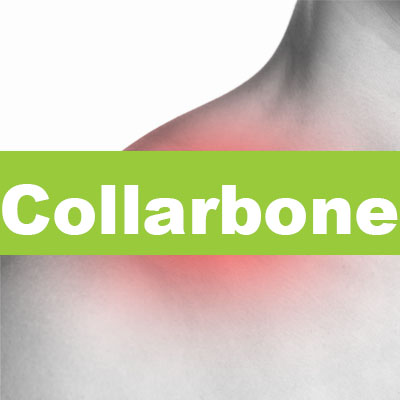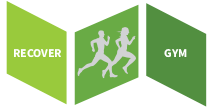The collarbone or the correct clinic term clavicula. The typical lesion that can occur is a Clavicle fracture, which means that you have broken your collarbone. The clavicula is actually where the arms are attached to the body.
The clavicula springs on sternum and the other side there is the shoulder blade, (Scapula) Which forms a joint with the humerus. Violent twitches in arms, e.g. what could happen during contact sports (Handball, basketball, etc.), could cause injury in both ends of the clavicula, where it’s attached to the sternum and scapula. The common symptoms of these lesions are often an inability to move the shoulder correctly or without pain.

Find your injury in the list below:
Broken collar bone
- Distinct pain at the collar bone after trauma.
- Direct (on site) and indirectly (pressure from shoulder / upper arm area) soreness on the line of fracture.
- Pain when the upper arm is moved as the clavicle is rotated and the fracture unevenly scratches against its two separated parts.
- Often a deformity is seen as the bone tip from the fracture can be seen and felt under the skin (open fracture).
Collarbone ligament injury
Dislocated collarbone
Thoracic Outlet Syndrome
- Pain in shoulder and neck.
- Pain in arm.
- Pain in hand.
- Sleeping, pricking and stabbing sensations into the hand.
- Skin color change in hand and arm.
- Cold hand.
- Weak pulse in arm and hand.
- Weak gripping strength in hand.
- A pounding sensation at the collar bone.
- In the worst case a blood clot under the collar bone.

Social Medier